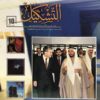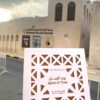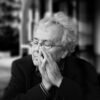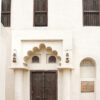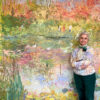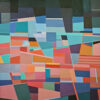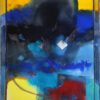A collective is an organizational system comprised of individuals united by their belief in their collective capacity to pursue their motivations, needs, and goals within the realm of social, cultural, and artistic interactions. These interactions include shared objectives, direct communication, and the potential for influence and impact, as well as collaborative artistic endeavors like exhibitions and more. Throughout history, artistic movements have been closely tied to the concept of “collectives” and their associated theories. In the Western world, artist collectives have significantly influenced the evolution of art and the emergence of artistic movements such as Dada and Surrealism, contributing to the development of cultural, visual, and aesthetic awareness. This influence has also extended to the Arab world, particularly in countries like Egypt and Iraq.
The United Arab Emirates has played a pioneering role in forming artist collectives since the early days of the local artistic movement, following the establishment of the Emirates Fine Arts Society. This was facilitated by the presence of numerous resident artists from Arab and foreign countries and local artists who completed their academic studies abroad. As a result, numerous artist collectives emerged in the early 1980s, laying the foundation for artistic, aesthetic, and cultural awareness.
This issue of “Al Tashkeel” magazine focuses on the topic of “The role of artist collectives in the development of the art scene in the Arab world.” Artist collectives serve as a driving force in fostering cultural and artistic development in the Arab world. They promote collaboration and creativity, facilitating communication between artists and society, thereby enriching culture and establishing strong artistic connections between different cultures.
Artist collectives in the Arab world originated in the early 20th century as a creative response to the cultural and social challenges facing Arab societies. These collectives were founded by artists and intellectuals committed to advancing the arts and culture in the region. Their objectives included improving communication and artistic exchange, fostering creativity and innovation, and raising public awareness of the arts and visual culture.
Through the dedicated efforts of academic researchers, some of whom were founders of these collectives, “Al Tashkeel” magazine aims to fulfill its mission and goal by documenting the history of art in the Arab world. This documentation spans from its origins and early stages to its present state, examining its current challenges and analyzing the deeper impact of Arab art and culture. This endeavor contributes to a deeper understanding of Arab cultural identity.
Art historian, curator, visual artist, & editor-in-chief of AlTashkeel magazine. she holds a Ph.D. with distinction in "Art & Science of Arts," in addition to holding an MFA in Fine Arts and an MA in Philosophy of Art. She has numerous published books that provide documentation for Art in the Arab World.



